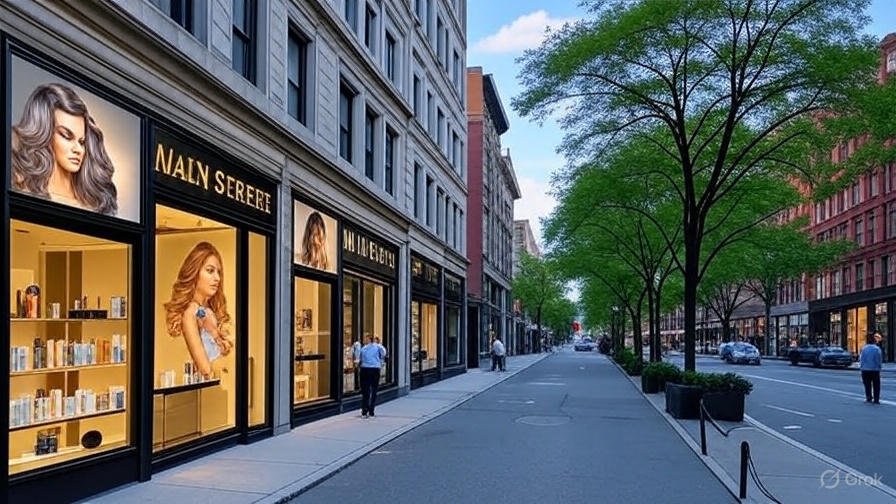From Main Street to Manhattan: America’s Most Profitable Salon Markets

Content
The beauty industry in America is experiencing unprecedented growth, with the salon and spa sector generating over $60 billion in annual revenue. While salons can be found on virtually every corner of the country, certain markets have emerged as particularly lucrative territories for beauty entrepreneurs and established chains alike. From bustling metropolitan areas to affluent suburban enclaves, these high-profit salon markets are reshaping the landscape of American beauty.
The Metropolitan Powerhouses
New York City: The Undisputed Crown Jewel
Manhattan leads the pack as America’s most profitable salon market, with average service prices 40-60% higher than the national average. The intersection of Wall Street wealth, Broadway glamour, and fashion industry influence creates an environment where clients regularly spend $300-500 per visit. The concentration of high-net-worth individuals, celebrities, and fashion professionals makes NYC a magnet for luxury salon concepts and premium pricing strategies.
The city’s dense population and limited personal space paradoxically drive demand for premium grooming services, with many residents viewing regular salon visits as essential rather than optional. Green spa treatments, celebrity hairstylists, and specialized services command premium prices that would be unthinkable in smaller markets.
Los Angeles: Where Image Meets Opportunity
Hollywood’s influence extends far beyond the silver screen, making Los Angeles the nation’s second most profitable salon market. The city’s culture of appearance-consciousness, driven by entertainment industry professionals, creates demand for cutting-edge hair color techniques, advanced skincare treatments, and specialized services like celebrity hairstyling and red carpet preparation.
L.A. salons benefit from year-round tourist traffic and the city’s reputation as a destination for cosmetic enhancements. Average service prices run 25-40% above national averages, with specialized treatments often commanding prices well into the hundreds.
Emerging Profit Centers
Miami: Latin Luxury and Lifestyle
Miami’s booming Latin American population, combined with its status as an international gateway, has created a unique salon market that blends traditional American beauty services with specialized treatments for diverse hair textures and skin tones. The city’s affluent demographics and tourism industry support premium pricing, particularly in areas like Coral Gables and South Beach.
The influence of international beauty standards and the city’s year-round warm weather drive consistent demand for both corrective and preventive beauty treatments.
San Francisco Bay Area: Tech Wealth Meets Wellness
Silicon Valley’s concentration of high-income tech professionals has created another profitable salon market, particularly focused on wellness-oriented services and natural beauty treatments. This market values organic products, sustainable practices, and health-conscious approaches that command premium pricing.
Regional Powerhouses
Dallas-Fort Worth: Texas-Sized Profits
The Dallas-Fort Worth metroplex represents one of America’s most underrated salon markets, combining traditional Texas wealth with growing corporate influence. The region’s strong economy and population growth have created demand for both luxury services and high-volume chain operations.
Denver: Mountain Market Growth
Denver’s combination of outdoor lifestyle enthusiasts and growing professional population has created demand for specialized services like sun damage repair, mountain sports recovery treatments, and natural beauty solutions that cater to active lifestyles.
What Makes a Market Profitable?
Several factors determine a salon market’s profit potential:
Disposable Income Levels: Areas with higher median household incomes naturally support premium pricing and frequent service utilization.
Population Density: Urban markets allow for higher client volume and specialized service offerings that smaller markets cannot support.
Cultural Factors: Markets with strong beauty cultures and social acceptance of regular salon visits drive consistent demand.
Competition Structure: Paradoxically, markets with high-end competition often support overall industry growth by establishing premium service expectations.
Rural Opportunities
While major metropolitan areas dominate profitability rankings, certain affluent rural markets offer excellent opportunities for salon entrepreneurs. Areas with significant retiree populations, country clubs, or proximity to major cities can support profitable operations with lower overhead costs.
Future Market Trends
The most profitable markets are increasingly characterized by:
- Specialization: Niche markets like medical spas, men’s grooming, and ethnic hair care
- Technology Integration: Markets embracing digital booking, social media marketing, and tech-enhanced services
- Wellness Integration: Services combining beauty treatments with health and wellness offerings
- Sustainability Focus: Eco-conscious markets demanding organic, sustainable beauty solutions
Bottom Line
While New York and Los Angeles will likely maintain their dominance in the near term, savvy salon entrepreneurs are finding opportunities in emerging markets that combine growing populations with increasing disposable income. The key to success lies not just in location, but in understanding local market dynamics and positioning services to meet specific demographic needs.
As the American beauty industry continues to evolve, these profitable markets will serve as bellwethers for industry trends, pricing strategies, and service innovations that eventually spread to smaller markets nationwide. Whether you’re launching a new salon concept or expanding an existing chain, understanding these market dynamics is crucial for maximizing profitability in today’s competitive beauty landscape.
